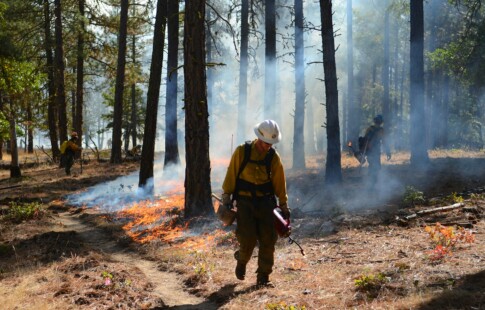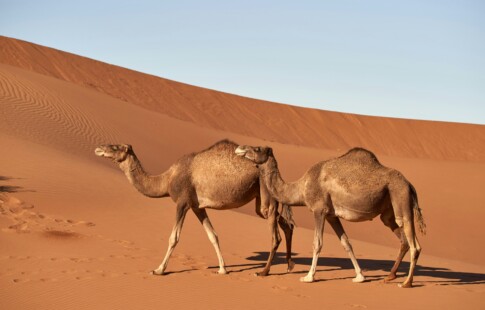
The Relationship Between Hurricane Harvey and Climate Change
We are reader-supported. When you buy through links on our site, we may earn affiliate commission.
Hurricane Harvey made landfall on August 25 as an enormous Category 4 hurricane. A Category 4 predicts catastrophic damage and winds in excess of 130 mph. Areas affected by it will remain inhospitable for weeks, or even months. And even though hurricanes weaken as soon as they hit land, they still can still cause significant damage farther inland. This exact scenario is what we saw happen with Harvey. Unfortunately, the likelihood of a repeat continues to rise. As of the last count, 39 people have died in relation to Harvey. The city has also lost electricity, is losing its clean water supply, has seen two chemical explosions, and has had to take on over 50 inches of rainfall, all from one storm that dumped over 24.5 trillion gallons of rain onto Texas and Louisiana.
A Changing Climate
To understand why Hurricane Harvey is a harbinger of climate changes means understanding how the climate is expected to change. It started out with the name “global warming” for a reason. As the planet’s overall temperature increases, the poles become less cold and more like the tropics and the tropical range expands.
The tropics have two main climate features: heat and humidity. We get storms when a cold front meets a warm front. So when the air in the poles becomes warmer, there will be fewer overall storms. But the other aspect is an increase in humidity.
Warmer air means more efficient evaporation, the same way water will evaporate quickly during the summer but takes much longer during the fall. That means there’s more humidity in the atmosphere, floating around and waiting to become a stronger than usual storm. So we add the decreasing storm frequency to the increase in storm intensity, and you end up with a recipe for disaster.
Experts say that hurricanes like Harvey should be rare, but Katrina happened a little over 10 years ago. That storm resulted in just under 2,000 deaths, catastrophic flooding and years to clean up. Hurricane Harvey is presenting some of the same challenges.
A Fluke or the Future?
Right now, we have a President who has made several public statements dismissing climate change. Scientists are being asked to adjust their papers to avoid words like “climate change” or “global warming” by the United States government. Trump’s budget chief said climate research is a waste of taxpayer money. Scott Pruitt, the head of the Environmental Protection Agency, does not think that humans are a driving force behind accelerated climate change. Trump has announced that he plans to take the U.S. out of the Paris Agreement, a plan which had no downside for the U.S. except shame. That is a problem.
Climate scientists, who are the only ones qualified to make these decisions, have already noted that Hurricane Harvey was likely intensified partially by climate change. They have already stated that human activity and the increased release of greenhouse gases are contributing to climate change. Their concern is no longer if climate change is occurring because the data shows that it is. The concern among experts now is how bad will it get and what we can do to mitigate the damage.
Trump’s blatant disregard for the only people who are qualified to speak on the subject is worrying. Four years may not seem like a long time, but in the few months he’s been in office, much of his work has focused on un-doing Obama era environmental regulations. That leaves us vulnerable. Without laws in place to help curtail our environmental impact, we stand little chance of helping to minimize climate change.
The U.S. is currently the second largest producer of greenhouse gases (GHG), right behind China. However, per capita, we still produce more GHG. China’s per capita production comes in at about 4.6 tons, while the US hits an astounding 19.8. That is not a good thing, and it highlights just how corrosive our current way of life is for the environment. Meanwhile, as Hurricane Harvey is dying off, Hurricane Irma is gearing up. It’s already a Category 3 hurricane, but it’s still pretty far out to sea. We don’t know its path yet. Also, in South Asia, monsoon season has started, and it has been an absolute disaster. The increase in humidity has led to flooding the region hasn’t seen for years. Already, 1,200 people have died from these floods, and they’re affecting 41 million people. So, we’re in danger.
Storms may become less frequent, but when they do occur, they’re more likely to bring unheard of devastation. With only 45 percent of Americans concerned about climate change, may citizens may not be raising the alarm we should. If our government refuses to do anything to help protect us or plan for the future, what kind of future will we have?
Share on
Like what you read? Join other Environment.co readers!
Get the latest updates on our planet by subscribing to the Environment.co newsletter!
About the author

Jane Marsh
Starting from an early age, Jane Marsh loved all animals and became a budding environmentalist. Now, Jane works as the Editor-in-Chief of Environment.co where she covers topics related to climate policy, renewable energy, the food industry, and more.





